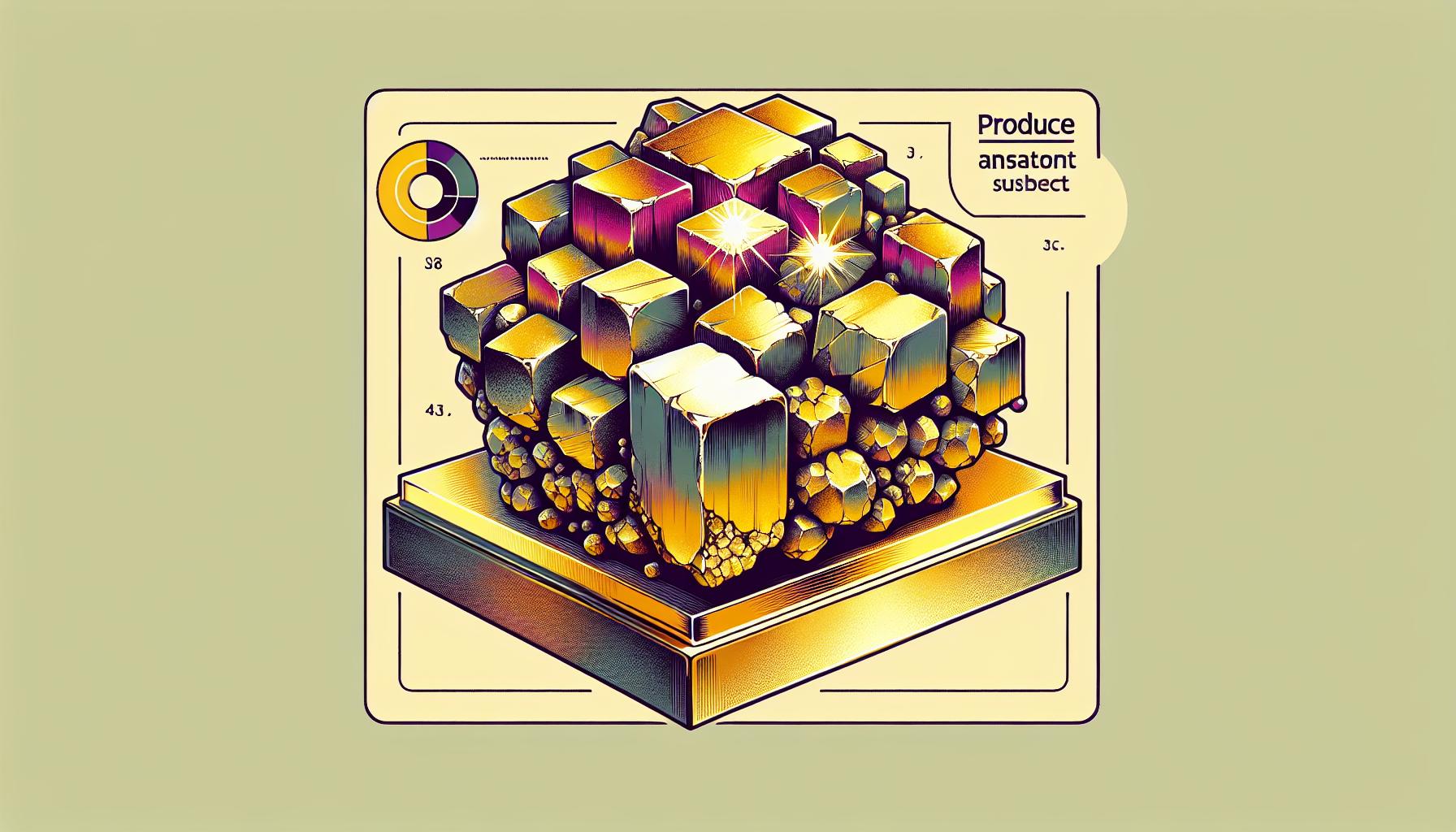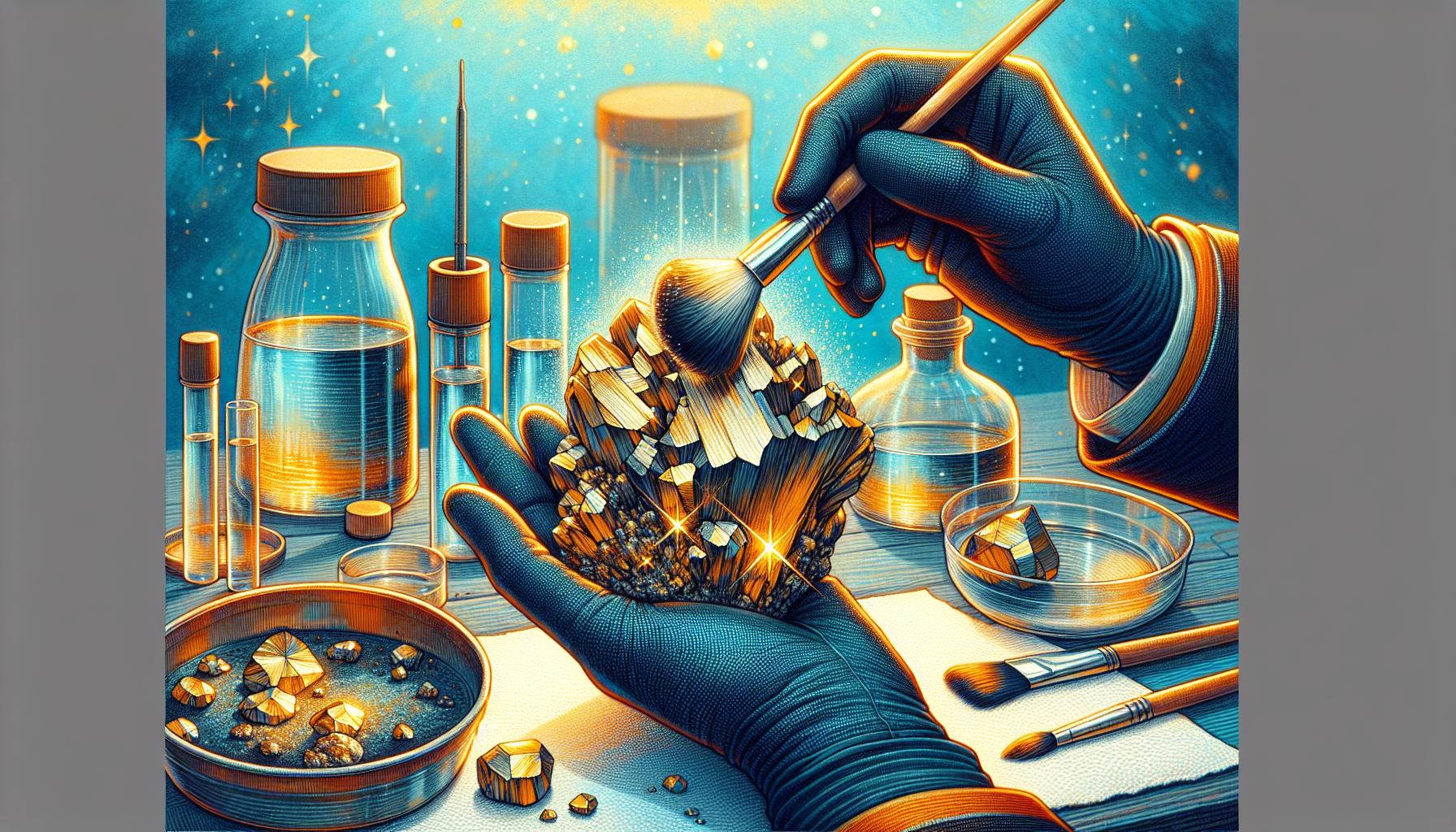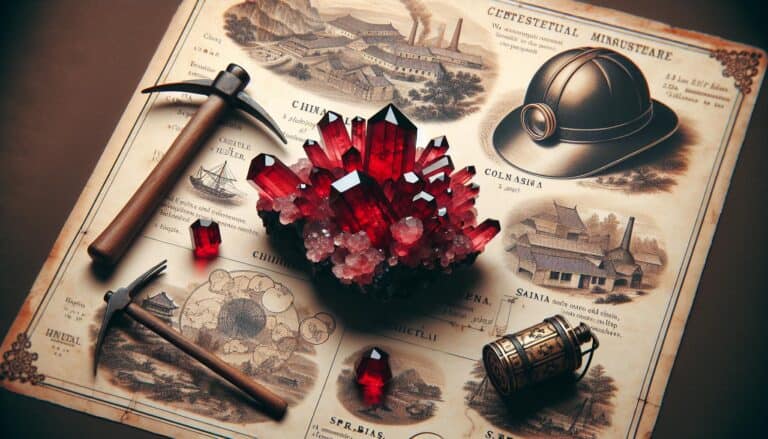Ever stumbled upon a shiny gold-like mineral and wondered if you’ve hit the jackpot?
Chances are, you’ve found pyrite, often nicknamed ‘fool’s gold.’ But don’t be fooled—identifying pyrite is straightforward once you know what to look for.
With its metallic luster and brass-yellow hue, pyrite isn’t just a trickster in the mineral world; it’s a fascinating specimen with unique characteristics. Whether you’re a budding geologist or simply curious, getting to know how to spot pyrite is both fun and educational.
Let’s dive into the tell-tale signs that set pyrite apart from real gold.
To identify pyrite, also known as fool’s gold, look for its metallic luster and brass-yellow hue, often with a greenish or blackish streak. Pyrite typically forms in cubic or pyritohedral shapes, distinguishing it from gold’s soft, malleable texture. It’s harder than gold, ranking about 6-6.5 on the Mohs scale.
How to Identify Pyrite Through Testing
When you’re setting out to identify pyrite, a variety of tests can be your best tools. These hands-on methods will further enhance your ability to differentiate between fool’s gold and the real deal.
Visual Inspection
Start with a thorough visual inspection. Pyrite typically displays a metallic luster and a brass-yellow color that can look similar to gold. However, it often forms in cubic crystals or as framboidal masses, which are not characteristics of gold. Examine the mineral for any visible striations or grooves, which pyrite commonly has but gold does not.
The Streak Test
The streak test is a simple way to identify minerals. Scrape your specimen against a streak plate or unglazed porcelain tile and check the color it leaves behind. Pyrite’s streak is greenish-black or brownish-black, while gold’s streak will be a shiny yellow.
Magnet Test
Contrary to gold, pyrite contains iron and is weakly magnetic. If you bring a magnet near your sample and notice a slight attraction, this could indicate the presence of pyrite. However, ensure you check for magnetite, another magnetic mineral, which is usually more strongly magnetic than pyrite.
Hardness Test
Pyrite has a Mohs hardness of about 6 to 6.5, which means it’s harder than gold’s Mohs hardness of just 2.5. Try scratching your specimen with a steel file. If it’s gold, it will be much softer and will scratch easily; pyrite, on the other hand, will resist scratching.
Birefringence Test
Birefringence is a phenomenon observed in some crystals. To perform this test, a thin section of the mineral is viewed under a petrographic microscope to see if it splits the light into two paths. Pyrite does not exhibit birefringence, so the absence of this effect can assist in identification.
Checking The Diaphaneity
Diaphaneity refers to a mineral’s transparency or opacity. Pyrite is generally opaque, meaning it lets no light through, while gold is ductile and can be made thin enough to be slightly transparent. This test can help confirm suspicions but should be used in conjunction with other tests.
Single or Double Refraction
To further test optical properties, determine whether the mineral is singly or doubly refractive. Pyrite, being isotropic, does not refract light into two separate paths; thus, it’s singly refractive. If your sample shows signs of double refraction, it might not be pyrite.
Refractive Index Test
A refractive index test, which measures how much light is bent when it enters a mineral, can be done by using a refractometer. Pyrite has a refractive index of about 1.81. Gold, being a metal, will not have a definitive refractive index like a crystal would.
Finding The Specific Gravity
The specific gravity of a mineral is a comparison of its density to that of water. You can conduct this test by weighing the mineral in air and then again when submerged in water. Pyrite has a specific gravity of around 5.0, which is lighter than gold’s impressive 19.3.
Identifying Pyrite in the Field
In the field, look for the tell-tale signs of pyrite in rocks. These may include shiny golden flecks that are actually not soft or malleable as gold would be. Often, these patches occur near quartz and other sulfide minerals.
Recognizing Potential Pyrite Rocks
Familiarize yourself with the typical rocks that house pyrite. It’s commonly found in sedimentary rocks like shale and coal, as well as in metamorphic rocks such as slate and in igneous rocks like pegmatites. By knowing where to look, you can enhance your chances of coming across this golden mimic.
Physical Characteristics of Pyrite

Understanding the physical characteristics of pyrite is essential for accurate identification. Pyrite, commonly known as fool’s gold, is well-known for its metallic luster and pale brass-yellow hue, which sometimes may tarnish to a darker shade.
Color and Luster
As you examine a potential pyrite sample, your first observation should be its color. Pyrite’s distinctive brass-yellow color resembles gold, but unlike gold, it has a greenish-black streak. Additionally, its luster – how it reflects light – is metallic and shiny, which can be a quick giveaway when differentiating it from other minerals.
Crystalline Structure
Pyrite crystallizes in the isometric system, typically forming cubes or pyritohedrons. It can also occur as flat, radial disks called framboids. If you’re examining a sample, look for these shapes which are a strong indicator of pyrite.
Texture
The texture of pyrite is another distinguishing feature. It’s hard and brittle, often feeling heavier than other minerals of similar size due to its high density. When you handle pyrite, it should feel substantial, and it won’t bend or curve as gold can.
Hardness
Here’s where a simple test comes in handy. Pyrite ranks about 6 to 6.5 on the Mohs scale of hardness. This means that if you try to scratch glass or a streak plate, pyrite can leave a mark. However, if you use a steel file on pyrite, it should scratch easily since steel is generally harder.
By becoming familiar with these physical properties, you’ll be well-equipped to identify pyrite with confidence whenever you come across it during your geological explorations. Remember, the combination of appearance, structure, and physical tests will support your identification efforts.
How Are Pyrite Formed?
Understanding how pyrite is formed can give you deeper insight into recognizing it in the field. Pyrite, commonly known as “fool’s gold,” is actually an iron sulfide, with its chemical formula being FeS2. It commonly occurs in high-temperature hydrothermal veins, sedimentary rock, and metamorphic rock. Often, it’s found in association with other sulfide minerals and quartz.
The process of pyrite formation can begin in a variety of geological conditions. One of the most prevalent methods is through the reduction of sulfates by organic matter in the presence of iron. When sulfate-bearing mineral waters infiltrate iron-rich rocks or sediment, chemical reactions may cause pyrite to crystallize. The combination of sulfur from the dissolved sulfate and iron from the surrounding environment comes together to form this mineral.
However, it’s essential to know that pyrite can also form in environments that lack organic material. Under certain conditions, such as in oxygen-poor environments, pyrite can precipitate directly from the water. This is because the lack of oxygen allows for the reduction of sulfate to sulfide, which can bond with available iron.
- High-temperature hydrothermal veins
- Sedimentary rocks
- Metamorphic rocks
- Association with sulfur and quartz
The diverse conditions that allow for pyrite’s formation imply that you might find it almost anywhere from the deep underground to surface deposits. Yet, each environment imparts distinct characteristics on the pyrite, which influences how you can detect and differentiate it from other minerals.
Preparation for Pyrite Hunting
Gathering the Right Tools
Before you set out on your pyrite hunting adventure, it’s essential to equip yourself with the right tools. High-quality tools are crucial for efficient prospecting and can greatly enhance your ability to find and retrieve pyrite samples. The most important tools you’ll need are:
- Geologist’s hammer: This is a must-have for breaking rocks and extracting specimens. Look for one with a flat end for prying and a pointed end for chipping.
- Chisels and pry bars: A set of chisels in various sizes will help you extract pyrite from tight spaces. A pry bar can be invaluable for leveraging larger rock sections.
- Safety goggles: Small rock fragments can fly at high velocities, so it’s critical to protect your eyes at all times.
- Gloves: Durable gloves will shield your hands from sharp edges and rough surfaces.
- Magnifying glass or hand lens: These tools will help you examine potential pyrite specimens closely on the spot.
- Field guidebook: A good guidebook on minerals can assist in on-site identification and provide valuable information about pyrite characteristics.
- Collection bags or containers: Sturdy bags or containers will transport your finds safely back home.
- GPS unit or a map and compass: Don’t underestimate the importance of navigation, especially when hunting in remote areas.
Remember, investing in durable and reliable equipment will pay off by making your pyrite hunting both safer and more productive.
Safety Considerations
When you’re out in the field, safety should be your top priority. The geological environments where pyrite is typically found can also be home to various hazards. Keep the following safety considerations in mind to ensure your searching goes smoothly:
- Wear protective clothing: Depending on the terrain, sturdy boots, long pants, and a long-sleeved shirt can protect against scratches and harmful plants or animals.
- Inform someone of your plans: Always let someone know where you’re going and when you plan to return.
- Be weather wise: Check the forecast before you leave and prepare for sudden weather changes by packing appropriate gear.
- Stay hydrated: Bring plenty of water to prevent dehydration, especially in arid or hot environments where pyrite may be present.
- Be cautious of wildlife: Know the types of animals you might encounter and how to safely respond to them.
- Understand the terrain: Uneven ground, loose rocks, and steep slopes can pose a risk; assess each step carefully.
- Carry a first-aid kit: This kit should include basics for cuts, scrapes, and other minor injuries you might sustain.
With your tools in hand and a keen awareness of safety, you’re now primed to begin your search for pyrite. Remember to respect the natural habitats you’re exploring and to always adhere to local laws and regulations regarding mineral collecting.
Handling and Care of Found Pyrite

Once you’ve successfully located and collected pyrite specimens, the next crucial steps are cleaning and storing your finds. These processes are imperative to maintaining the quality and luster of your pyrite.
Cleaning Pyrites
Be gentle throughout the cleaning process as pyrite is a delicate mineral. Start by using a soft brush to dust off loose dirt. If water is necessary, opt for distilled water which minimizes potential chemical reactions. Avoid household cleaners and detergents; these can cause damage to the pyrite’s structure.
- Soak pyrites in distilled water for a few hours.
- Gently scrub with a soft brush.
- Rinse with more distilled water.
- Air-dry thoroughly on a soft cloth.
Storing Pyrites
Proper storage is key to preventing damage. As pyrite can be prone to oxidation, it’s essential to store it in a cool, dry place. Low humidity is your friend here. Wrapping each piece individually in tissue paper or placing them in a padded container will prevent scratches.
- Use sealable, airtight containers to reduce air exposure.
- Include silica gel packets to control moisture.
- Avoid storing multiple pieces in one bag to prevent scratching.
- Label your containers with the date and location of find for future reference.
Monitoring your specimens for signs of decay or oxidation regularly can help you make any necessary adjustments to their care routine, ensuring their longevity and preserving their natural beauty for years to come.
Conclusion: Confirming Pyrite is Real
You’ve got the know-how to identify pyrite and distinguish it from other minerals.
Remember, the care you give your specimens is just as important as the thrill of discovery. Proper cleaning and storage will ensure your pyrite remains as brilliant as the day you found it. Keep it safe in a cool, dry environment, and stay vigilant for any signs of deterioration. With these tips, you’ll maintain the natural beauty and value of your pyrite collection for years to come.
Enjoy the golden sparkle of your finds and the knowledge that you’ve mastered the art of identifying and preserving this fascinating mineral.







